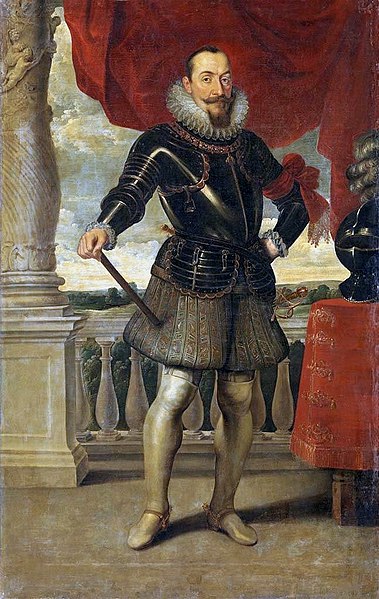The Partitions of Poland were three partitions of the Polish–Lithuanian Commonwealth that took place toward the end of the 18th century and ended the existence of the state, resulting in the elimination of sovereign Poland and Lithuania for 123 years. The partitions were conducted by the Habsburg monarchy, the Kingdom of Prussia, and the Russian Empire, which divided up the Commonwealth lands among themselves progressively in the process of territorial seizures and annexations.
Allegory of the first partition of Poland, showing Catherine the Great of Russia (left), Joseph II of Austria and Frederick the Great of Prussia (right) quarrelling over their territorial seizures
Włodzimierz Tetmajer, Allegory of Dead Poland, St. Nicholas Cathedral, Kalisz
Rejtan at Sejm 1773, oil on canvas by Jan Matejko, 1866, 282 cm × 487 cm (111 in × 192 in), Royal Castle in Warsaw
1793 Russian campaign medal
Polish–Lithuanian Commonwealth
The Polish–Lithuanian Commonwealth, formally known as the Kingdom of Poland and the Grand Duchy of Lithuania, or simply Poland–Lithuania, was a bi-confederal state, sometimes called a federation, of Poland and Lithuania ruled by a common monarch in real union, who was both King of Poland and Grand Duke of Lithuania. It was one of the largest and most populous countries of 16th- to 17th-century Europe. At its largest territorial extent, in the early 17th century, the Commonwealth covered almost 1,000,000 km2 (400,000 sq mi) and as of 1618 sustained a multi-ethnic population of almost 12 million. Polish and Latin were the two co-official languages, and Roman Catholicism served as the state religion.
The Union of Lublin joined the Kingdom of Poland and the Grand Duchy of Lithuania in 1569.
Sigismund III Vasa, who reigned between 1587 and 1632, presided over an era of prosperity and territorial expansion of the Commonwealth.
Sejm (parliament) of the Polish–Lithuanian Commonwealth in the early 17th century
John III Sobieski, victor over the Ottoman Turks at the Battle of Vienna in 1683.








